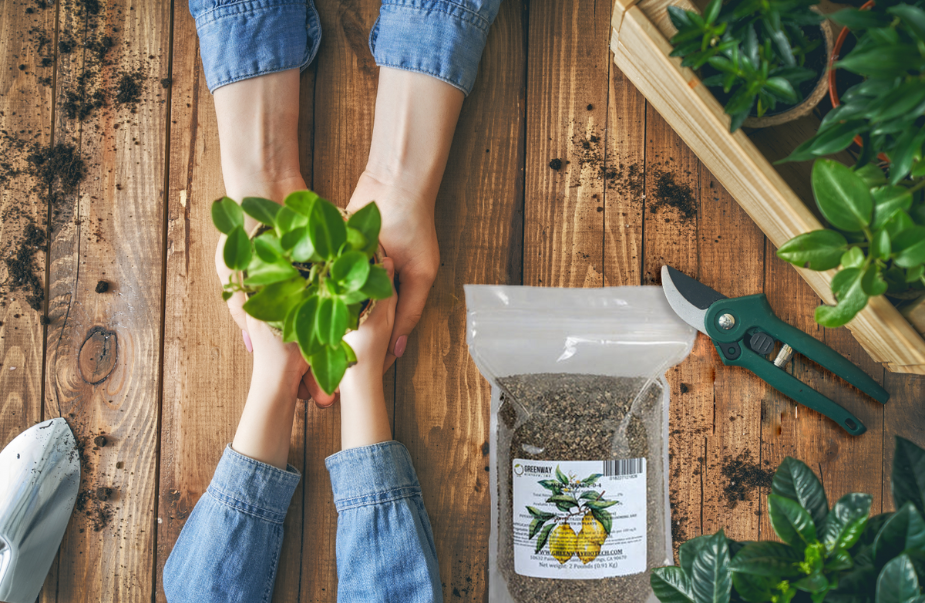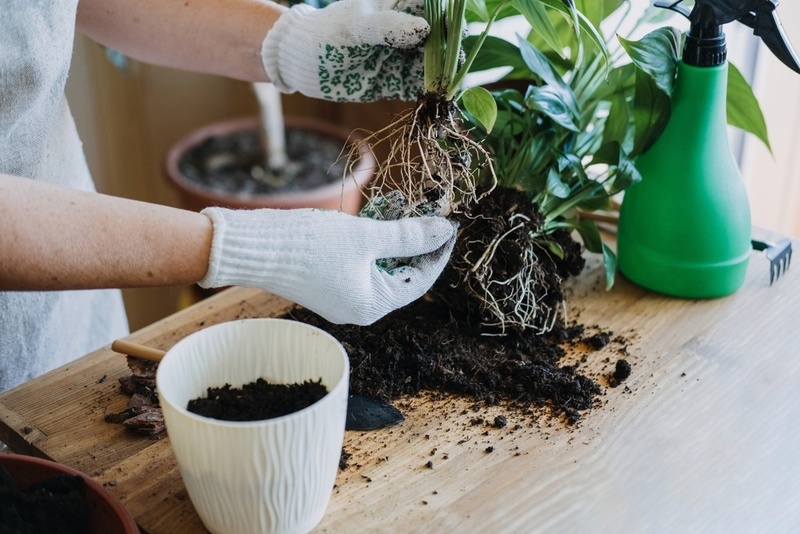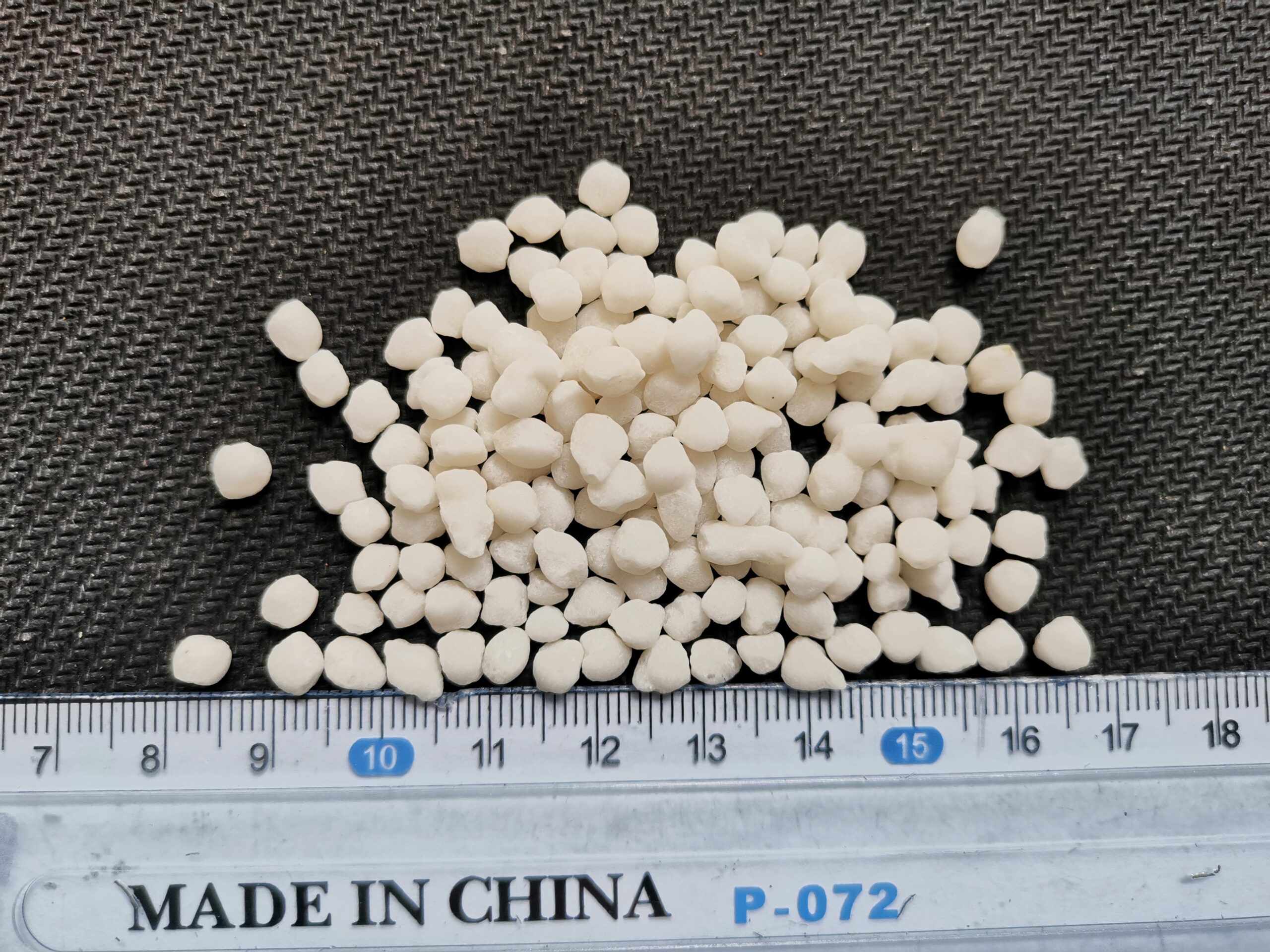Introduction to Organic Fertilizers for Indoor Plants
Houseplants contribute much to enrich the interior living spaces, serve as air purifiers and beautiful additions to our home decor, but all these can be seriously compromised if their health is not maintained through proper nutrition and care. For robust plant growth that is often stunted in the interior spaces of homes through depleting nutrients in the soil used in confined spaces, the best organic fertilizer for indoor plants provides an eco-responsible and health-conscious solution for the plant-lover’s desire for creating their green haven indoors.
Indeed, organic fertilizers are radically different from their synthetic counterparts. Obtained from sewage sludge, animal manure, plant extracts and minerals, they feed plants by releasing their nutrients slowly over days or even weeks. This is more like the natural nutrient availability in wild settings where plants receive a steady, but low, supply of nutrients decomposed by soil organisms. ‘Organic fertilizer feeds plants, but unlike inorganic fertilizers, it keeps feeding the soil as well,’ said Sarah Watkins, a professor at the University of Georgia and one of the world’s foremost researchers in the field of botany and sustainable agriculture. ‘It supports microbial life which improves root health, soil structure, and helps plants better withstand water and nutrient stress.’
No plant can grow without nutrients. There are three essential plant nutrients that every plant needs and which a good best organic indoor plant fertilizer will have in the right proportions. In terms of dry mass, the three most important plant nutrients are nitrogen (N), phosphorus (P) and potassium (K), which are normally abbreviated as N-P-K.
Nitrogen is taken up in the form of nitrate or ammonium and is used in cell respiration to make protein and chlorophyll, necessary for photosynthesis and leaf growth. Phosphorus is required for root growth as well as for flowering and therefore is essential particularly for fruit and seed development. Potassium (K) is used in virtually every living cell and plays a role in every chemical reaction that takes place in the plant. It helps make photosynthetic and protein molecules and is essential for plant heart function (water use).
Evaluating the Best Organic Indoor Plant Fertilizer
In this article, I will review four key considerations to take into account when you decide to purchase the best organic indoor plant fertilizer for your beloved household plants. They will help you to select fertilizers that can contribute to your plants’ health and growth.
- Assessing your plants’ nutritional needs and soil condition is key before choosing a fertilizer: first, not all fertilizers are the same, as they contain different ratios of nutrients, and second, every plant has different nutrient needs at different growth stages and native habitats. If you have flowering plants, phosphorus deserves some attention, as it is known to boost blooms. On the other hand, nitrogen is an important nutrient for foliage plants.
- Types of Organic Fertilizers – Compare: Organic fertilizers are available in several types. Each one of them has their own set of benefits. Liquid organic fertilizers are extremely easy to administer and absorb quite fast, thus they are best for inducing nutrients and minerals when the plants show signs of deficiency. Solid type of organic fertilizers such as pellets and granules, are slow in releasing the nutrients feeding them to the plants at a slow and constant frequency of supply and hence reducing the chances of over-fertilization.
- N-P-K Ratio: Examine the Nitrogen, Phosphorus, and Potassium (N-P-K) Ratio. Every element is indicative of a particular action.
- Nitrogen (N) promotes lush, green growth of leaves and stems.
- Phosphorus, on the other hand, is important for growing roots and the development of flowers and fruits.
- Potassium (K) enhances overall plant vigor and disease resistance by regulating physiological processes.
Picking the correct N-P-K ratio on the fertilizer is important for proper plant growth and development based on the current needs of your plants. A well-balanced N-P-K ratio suitable for most common indoor plants is 14-14-14, but it could also differ depending on certain plant needs or results of soil tests.
- Long-Term Effects on Soil Health: In addition to feeding the plants, organic fertilizers enhance the health of the soil. They increase the soil’s organic matter which, in turn, supports the activity of beneficial microbes. These soil microbes play important roles in the cycling and breakdown of organic matter into nutrients accessible to the roots of the plants, which, in turn, improves the soil structure and long-term fertility.
To sum up, an organic indoor plant food is the best choice, taking into account characteristics of different plants’ nutritional requirements, technical properties of the different fertilizers, and the ratio of elements. Indoor gardeners are now needed to master specialized knowledge and skills to enhance the plant’s vitality and prolong its life with an organic indoor plant food.

Top Recommended Best Organic Indoor Plant Fertilizers
The best compost organic indoor plant fertilizer is a matter of perspective, but it also depends greatly on the specific needs of your plants and choosing the best products that can genuinely promote the health and well-being of your plants. Here is a guide to the best compost organic indoor plant fertilizers on the market, the most reliable and effective products in this sector.
- Seaweed Extracts: A fast-absorbing, highly bioavailable source of micronutrients. Our organic seaweed extract feeds your plants’ insatiable appetite for nutrients while protecting them against environmental stress. Works great on leafy vegetables, used as a foliar spray and a soil drench.
- Fish Emulsion: Another strong (nitrogen and nutrient-rich) organic liquid fertilizer. It is great for promoting healthy vegetative growth and carries a strong odor. Although the smell can be off-putting at times, it’s a favorite with indoor gardeners due to the significant boost in plant growth.
- Worm Castings: Also called vermicompost, worm castings are considered the gardener’s black gold. Worm castings are an all-purpose organic fertilizer and a natural slow-release source of plant nutrients. They are among the gentlest fertilizers for plants and are especially good for young plants and seedlings. Worm castings improve water uptake.
- Composted Manure: The gold star fertilizer of old is still very much the gold standard because it is rich in nutrients and helps soil function: well-composted cow, chicken, or horse waste is awash with nutrients and good for building soil over time.
- Bone Meal: High in phosphorus, bone meal aids in the flowering of plants if they need a little lift to grow deeper, firmer roots and beautiful blooms. This slow-release phosphorus is continuously enriched in the soil and supports flowering throughout the season.
Each of these products stands out for specific reasons:
- Seaweed extracts and fish emulsion are best for quick nutrient uptake.
- Worm castings and composted manure excel in improving soil structure and long-term fertility.
- Bone meal is ideal for phosphorus supplementation, especially necessary for blooming plants.
Finally, also choose your natural organic fertilizer for indoor plants according to the kinds of plants that you’re planting inside. A succulent will need to be fed differently from a tropical plant, or a flowering plant. So, choosing the best organic fertilizer for indoor plants for each kind of plant will matter to the growth and health of your plants.
Try incorporating these top best practices into your gardening routine to ensure that your indoor plants get the proper care and result in a beautiful green indoor garden.
How to Apply Organic Fertilizer to Indoor Plants
Applying the best indoor organic fertilizer correctly is as crucial as selecting the right one. Proper application ensures that plants maximize the benefits of the fertilizer without the risk of damage from over-fertilization. Here are some tips to guide you on how to apply indoor fertilizer correctly.
- Best Practices for Fertilizer Application:
- Frequency: How often to fertilize depends on the plant’s growth phase. During the growing season – especially in the spring and summer months – when growth is at its peak, fertilize every 4-6 weeks. In the dormant winter months, when growth slows down, reduce the frequency or stop fertilizing altogether.
- Quantity: Use the amount of fertilizer specified on the container. Too much fertilizer can lead to nutrient burn, where the salt concentration in the fertilizer burns the roots of the plants.
- Method: For liquid fertilizers, dilute as directed and apply at soil level to avoid leaf burn. For granular types, scatter around the base of the plant and lightly work it into the soil or use as a top dressing.
- Tips on Mixing Your Own Organic Fertilizers:
- Homemade compost: Utilize kitchen waste, yard waste, or worm castings to create a nutrient-rich compost. However, do not apply compost until it’s fully broken down, as it can draw nitrogen from the soil as it decomposes.
- Coffee grounds: Rich in nitrogen, coffee grounds can be dug into the soil or mixed into the compost pile to enhance nutrient content.
- Eggshells: Crushed eggshells add calcium to the soil, crucial for healthy cell structure development in plants, which can prevent blossom end rot in vegetables such as tomatoes.
- Common Mistakes to Avoid in Fertilizing Indoor Plants:
- Overwatering after fertilizing: This can cause the nutrients to wash out of the soil before they reach the roots, reducing the effectiveness of the fertilizer.
- Ignoring Plant Signs: If you notice yellowing leaves, stunted growth, or signs of leaf burn, reassess your fertilization strategy. These signs might indicate that your fertilization regimen is either excessive or insufficient.
- Using Stale Fertilizer: Organic fertilizers can lose their potency over time. Always use fresh products and store them in a cool, dry place.
Applying these tips and avoiding common pitfalls will help keep your indoor plants healthy and robust. The best organic indoor plant fertilizer not only promotes strong plant growth but also enhances the overall vitality and longevity of your indoor garden.
Monitoring Plant Health and Adjusting Fertilization
It is crucial to monitor and adjust the quantity of fertilizer used because your indoor plants should never be stressed by excessive mineral intake, yet they should receive all necessary nutrients from the best organic fertilizer for indoor plants. Being attentive to your plants and making the necessary changes is key.
When your indoor plants are thriving and getting the proper nutrition from the greenest organic indoor plant fertilizer on the market, you will recognize it by the vibrant and thick leaves, robust growth, and for flowering varieties, the blossoms will have lush color and full flourish.
However, if the plants show signs of nutrient deficiency, you must adapt your regime. You might observe:
- Nitrogen deficiency: Leaf yellowing, most severe on older leaves, because nitrogen is translocated to new growth.
- Phosphorus deficiency: Darker, perhaps purplish, foliage, often with stunted growth or fewer blooms.
- Potassium deficiency: Browning or yellowing of leaf edges, often accompanied by weaker stems.
Signs of nutrient excess due to over- or heavy applications of fertilizer include:
- Excessive leafy growth with few or no flowers.
- Salt buildup in the soil, which can appear as a white crust.
- Leaf tip burn, indicating toxic levels of fertilizer.
To adjust your fertilization strategy effectively:
- If you notice signs of over-fertilization, reduce the amount or frequency.
- Boost nutrient supply only by a small amount, and only if deficiency symptoms persist, always keeping within the safe range of dosages to prevent secondary problems.
- Periodic soil testing could help you determine what your soil is deficient in or what it has too much of, so you can fertilize more accurately.
As you make regular adjustments based on the feedback from your plants, you will be able to nourish your indoor plants with the best organic indoor plant fertilizer in the most efficient way, as well as keep your indoor garden healthy. In turn, a lush oasis in your home will bloom.

Conclusion: Enhancing Indoor Plant Health with the Best Organic Fertilizer
In summary, your indoor plants must be fertilized organically to optimally develop and stay stunning. By using these organic products in the right way and order, your indoor plants will get their required nutrients and you won’t expose yourself to the dangers of over-fertilizing your plants.
Recap of the Benefits:
- Better Plant Growth: Plants supplied with an ideal combination of nutrients derived from organic fertilizers achieve brighter hues, taller heights, and greater resistance to unpredictable climate conditions.
- Improved Soil Health: Organic fertilizers build soil health over time by enhancing its physical structure, increasing biological activity in the soil, and maintaining a healthy pH.
- Sustainable Practices: If you use organic over synthetic fertilizer, you are using an eco-friendlier method of supporting gardens.
While finding and learning to use the best organic fertilizer for indoor plants is something you will have to figure out by trial and error, and by experimenting with what gives you the best results, the rewards, including a greener and more lush home plant environment, make the effort very worthwhile.
Encouragement for Future Gardening Endeavors:
Remember, no two plants are exactly alike and one plant may respond differently to different fertilizer brands. Keep your observations keen, don’t give up, and revise your practices based on what your plants respond to. If you stay the course, you will gradually learn how using organic fertilizer can enhance the growth and vitality of your indoor garden.
Then use the best organic indoor plant fertilizer available, and watch your indoor green wonderland flourish. With this mindful approach to gardening, you’ll not only benefit the plants you care for, you’ll also bring new life to your living space and your life.
FAQs: Common Questions About Best Organic Indoor Plant Fertilizer
Q1: How often should I fertilize my indoor plants with organic fertilizer?
A: According to the plant type and its growing season or speed you fertilise often; for the period of active growth season spring/summer, it’s better to fertilise with organic fertilizer every 4-6 weeks. For the dormant season spring (winter), it’s better to reduce fertilizer or stop fertilizer since the plant’s growth also made undulate.
Q2: Can I use organic fertilizer on all types of indoor plants?
A: Sure, but the exact type and quantity of food will depend on the species. If you have a flowering plant, it might need a fertilizer richer in phosphorus to help it produce flowers, while a foliage plant might benefit from a nitrogen-rich fertilizer to help it produce more leaves.
Q3: What makes an indoor plant fertilizer ‘organic’?
A: Organic fertilizers are made from organic waste, including plants and animal byproducts, while chemical fertilizers are made from materials obtained from the chemical industry. Organic fertilizers are decomposed by microbes and slowly release nutrients into the soil, which makes them an environment-friendly and sustainable option.
Q4: Are there any risks associated with using organic fertilizers indoors?
A: Organic fertilizers are generally quite safe to use. However, if applied in high dosages, the fertilizer will burn the plants – or bring too many pests to the plants. Therefore, you always follow the manufacturer’s/theory’s recommendation of doses, according to the specific needs of your plants.
Q5. Can you explain in simple terms how to know if plants are fertilised too much or too little?
A: If your plants are growing slowly, losing their fresh green colour, or not producing flowers or fruit, you might have a nutrient deficiency. Conversely, if you notice salts on the surface of your soil, leaf tip burn, or lush foliage growth at the expense of flowers or fruit, you may have over-fertilised your plants. Adjust your fertilisation protocol accordingly.
Q6: Can organic fertilizers improve the smell and air quality of my indoor garden?
A: Organic fertilizers feed the plants but healthy, well-fed plants can indirectly contribute to improving the air quality indoors and make your indoor garden a more pleasant place to be. A few of the organic materials used in fertilizers can even have earthy smells that can further enhance your sensory experience with your indoor garden.
Here are some scholarly references that discuss the use of organic fertilizers for indoor plants:
- University of Georgia Extension discusses various soil mixes for indoor plants, including the use of organic fertilizers. They emphasize the importance of creating a suitable growing environment that includes the appropriate use of organic fertilizers to enhance plant health and growth.
- University of New Hampshire Extension explores different potting media and fertilizers, including organic options, highlighting their pros and cons for containerized plant growth. This source provides valuable information on how organic fertilizers can be integrated into indoor gardening.
- Utah State University Extension offers a comprehensive guide on selecting and using organic fertilizers, noting their variable nutrient release rates and how they can be matched to plant needs. This information is crucial for understanding how to effectively use organic fertilizers for indoor plants.
- Harvard University’s research discusses a biofriendly fertilizer developed on campus that offers a greener way to grow plants by minimizing environmental impact. This innovative approach highlights the potential of new organic fertilizer technologies to enhance indoor and outdoor plant cultivation sustainably.







